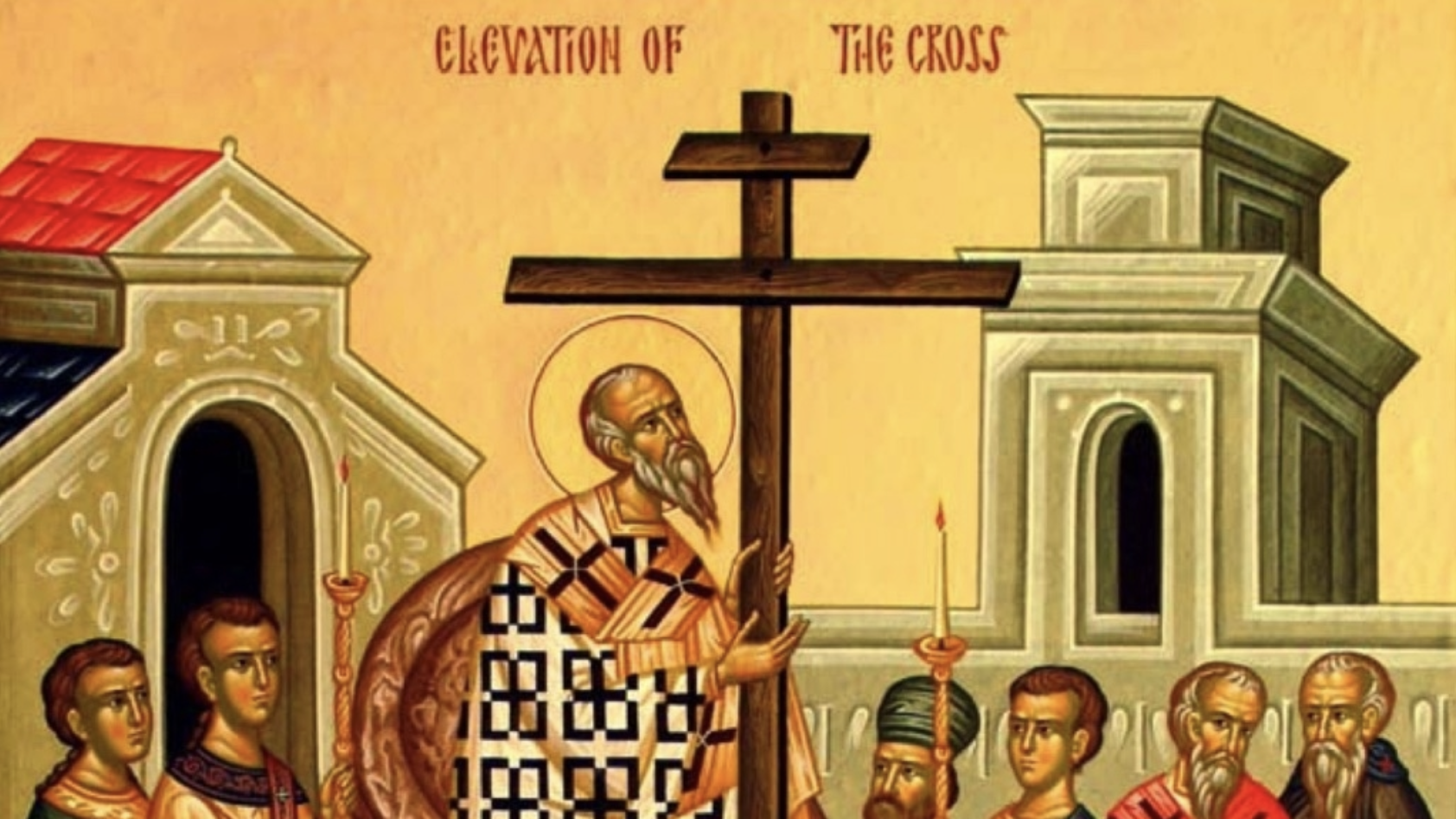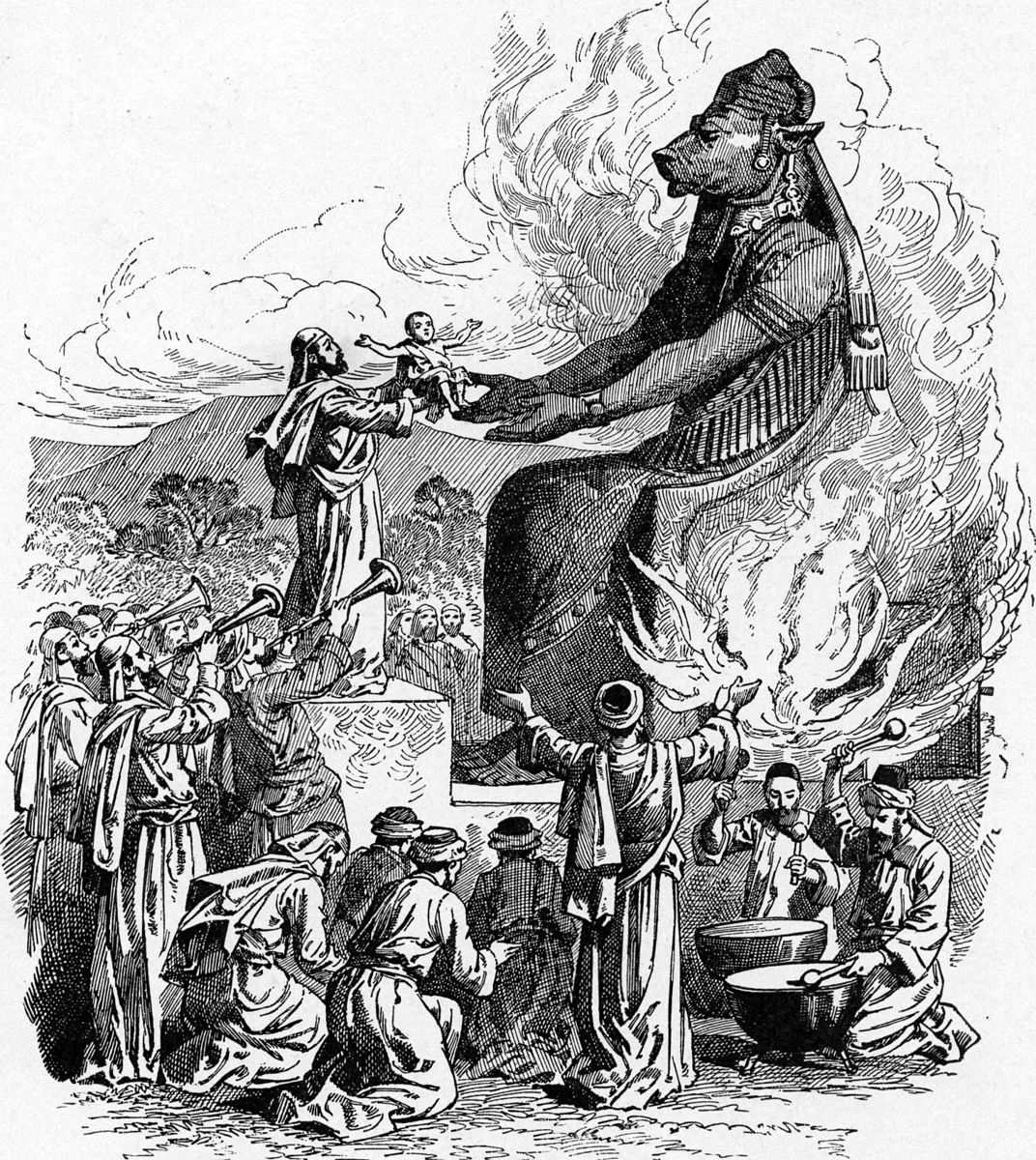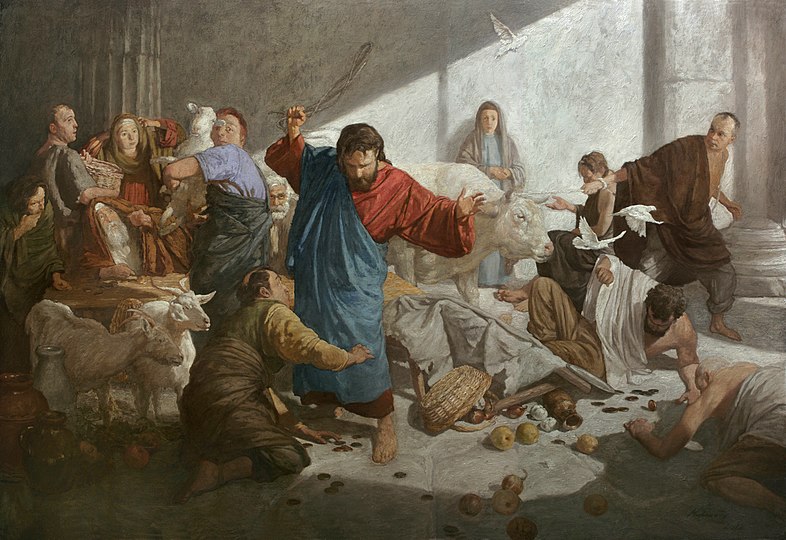
John 12:28-36 (Matins)
1 Corinthians 1:18-24
John 6:11,13-20,25-28,30-35
"Be Not Afraid"
But He said to them, "It is I. Be not afraid."
(Jn 6:20)
In the Name of the Father and of the Son and of the Holy Ghost. Amen.
Do you know
the sublime?
It is a mysterious phrase.
It describes the magnificence which inspires awe.
The sheer power of the tornado,
or the hurricane at its zenith,
is sublime,
overwhelming us,
moving us to the edges of human experience.
I stood a half-mile from a tornado.
Every hair on my body stood up,
and
waves of awe swept over me.
The distinguished scholar Frances Ferguson wrote,
"Wolves are sublime.
Dogs are not."
What do we say of the image
which was at once
the most hated symbol in the Jewish imagination
and
the Throne of God on Earth?
Four years before the birth of Christ
and
three miles from Nazareth,
2,000 Jews were crucified in a single day
with their families butchered at the foot of each of their crosses.
Yet,
the only time the Son of God formally presided as King
before the people was upon a Cross:
.... Pilate wrote a title and put it on the Cross. And the writing was:
JESUS OF NAZARETH, THE KING OF THE JEWS.
(Jn 19:19)
|
The people said,
"Let the Christ, the King of Israel, descend now from the Cross,
that we may see and believe."
(Mk 15:32)
|
What is this most hated and most adored symbol?
What is its undoubted power in our own lives?
Does it not summon feelings of revulsion and adoration even today?
During His own earthly life,
Jesus offered this most hated symbol as a gesture of His love:
Then Jesus, looking at him, loved him, and said to him, "One thing you lack:
Go your way, sell whatever you have and give to the poor, and you will have
treasure in Heaven; and come, take up the Cross, and follow Me."
(Mk 10:21)
|
It is hated .... and refused.
Yet,
the Son of God attests that its value to be above all price.
Can we not say , today, that the meaning of the Cross continues to be controversial
and disputed at the highest levels of Christian authority .... even within the Catholic Church?
In the West,
the Cross is contemplated in terms of "the Lamb who was slain" (Rev 13:8),
wrote St. John the Divine.
"Christ our Passover was sacrificed for us" (1 Cor 5:7),
wrote St. Paul.
His Blood poured down from the Cross
re-enacting the sacrificed lamb
whose blood
was
painted on the door lintels of Egypt,
that the plague of death might not come near,
but "pass over" us.
Catholic religion in the West
centers upon
Jesus' passion
and
human death.
Did you know that the Stations of the Cross are practiced as a spiritual discipline
exclusively
in the West,
notably in the Roman Catholic, Anglican, Lutheran, and Methodist Churches?
This spiritual discipline
was developed in Italy during the eleventh century and then
imported into Jerusalem with the advent of the Franciscan friars in the thirteenth century.
But it never caught on in the East.
Protestants today assert that Jesus "nailed the bond of our sins" to His Cross
annulling our debt.
For them,
the Christian religion centers on Jesus' death
expiating sins.
This is salvation.
This is the way to Heaven.
As with the sacrifice of the Passover lamb,
such religion is "animal sacrifice religion."
It poses an equation:
|
Jesus is offered as a sacrifice = My sins are forgiven
|
But is this the sum and total of Christianity?
That is,
is Christianity a cult of death, or is it a Way of Life,
.... or better said,
The Way to Life?
This is no small question.
Indeed,
it goes to the heart of our entire Judeo-Christian tradition.
But let us begin at the beginning.
To
quote the Ukrainian scholar, Yehezkel Kaufmann,
of the Hebrew University in Jerusalem,
a most respected scholar,
|
"The exile is the watershed. With the exile, the religion of Israel
comes to an end, and Judaism begins."
|
Before the Babylonian Captivity,
the Hebrew people practiced a religion modeled on the purposes of Eden,
which was to attain complete unity with God.
God created
man and woman
in His Image
including the faculties of contemplation and free will.
He conversed with them and taught them.
God expected them to mature unto the fullness of their Image,
which was Himself.
This was their telos, their blueprint, set within them from the beginning.
It follows that this should also be the human blueprint forever after,
for we were created human.
Indeed,
Solomon's Temple was laid out to focus the mind and spirit
upon this very process and spiritual journey.
The outer courtyard represented the world.
The interior was paneled in cedar
with images carved into it depicting the Garden of Eden
(1 Kings 6:29)
recalling unity with God.
Beyond lay the Holy of Holies,
where the High Priest reached the summit of human experience:
to embody in human dimension the fullness of God.
Orthodox Christians today recognize this process as theosis,
which is the purpose of life on Earth.
I might say as an aside that the Old Testamant scholar Margaret Barker,
specializing in ancient Hebrew culture,
was present in an Orthodox temple witnessing an Orthodox liturgy.
It was her first time.
She said later that it was new to her,
yet it was familiar.
For what she witnessed was precisely the spirituality she saw
in Solomon's Temple through the lens of her scholarship.
Yes, this journey will be a way of thorns leading to a Cross,
for these are among the Promises of Christ:
"In the world you will have tribulation" (Jn 16:33),
but know this:
".... [the world] hated Me before it hated you." (Jn 15:18).

With the Siege of Jerusalem and the Babylonian Captivity (605-539 B.C.),
Solomon's Temple was razed to the ground,
and
the political and cultural leaders of the Hebrew civilization were taken
to Babylon.
For two generations they were acculturated to a new language (Aramaic),
learned new customs,
and
were inured to a new religion.
The primary focus of ritual within Babylonian temples was animal sacrifice.
"Since I have been king,"
said
Nebuchanezzar II,
"Markduk (the Bablylonian idol)
has never eaten so well!"
Animal sacrifice religion
was practiced throughout the Middle East during the Iron Age,
except in Jerusalem.
As Prof. Kaufmann has written,
but the Hebrew lifeworld died there,
and
Judaism,
a blend of the old and the new,
was born.
But how could the slaughter of an animal become a central religious activity
(which I became familiar with in Haiti in the form of Voudou)?
The idea is that the animal is manifestly filled with an abundant "life force."
Whether it be the strutting chicken
or
the bull beating the earth with its hoofs,
the animal exhibits a veritable power plant of energy
inspiring humans with its living, breathing life which they could never aspire to create,
but only marvel at.
In the act of sacrifice,
then,
an attempt is made at opening
this
force on to the surrounding world.
The arteries of the bull are severed at the neck
releasing
a burst of palpable life-energy
with
the warm outpouring of its blood.
This
is then collected and sprinkled,
imparting life force wherever it is directed.
The effect of such religion, of course, is to de-personalize and to de-humanize.
Gone is the ancient Hebrew religion of relationship with the Divine,
of friendship with God.
Here is quid pro quo religion
whereby
an idol,
whether it be Marduk, Moloch, or Baal,
is offered this
in exchange for that .... perhaps
expiation for sin
or
fertility
or
rain for crop fields.
This for that.
This is not the religion we find proceeding from the lips of the Son of God,
who said,
|
"I and My Father are One."
(Jn 10:30)
|
And
|
".... the glory which You gave Me I have given them, that they may be One just as We are One."
(Jn 17:22)
|

Not once does Jesus direct the minds and souls of His Disciples to quid pro quo sacrifice.
Indeed,
the most violent chapter in the Jesus story depicts His rage
(there is no other word for it),
the rage of the Son of God
that animal sacrifice should be practiced in the Temple.
And the long memory of God's Son easily recalls a time
a thousand years earlier
when
theosis
had been the Temple's primary focus.
|
Then Jesus went into the temple and began to drive out those who bought and sold in the temple,
and overturned the .... seats of those who sold doves. And He would not allow anyone to carry
wares through the temple. Then He taught, saying to them, "Is it not written, 'My house shall
be called a house of prayer for all nations'?"
(Mk 11:17)
|
He said,
|
"I will destroy this temple."
(Mk 14:58)
|
Prophesying to His disciples concerning the Temple and all the rest of Jerusalem,
He declared,
|
"Do you see these great buildings? Not one stone shall be left upon another, that shall not be thrown down."
(Mk 13:2)
|
And in 70 A.D., by the will of God, the Temple was razed to the ground.
As Hebrew religion veered in the direction of animal sacrifice
becoming transformed into
Judaism,
so
Christianity in the West, much later, became absorbed with this precedent,
whose high point during the early Middle Ages
was the Sacrifice of the Mass
executed upon a High Altar
for all to see
—
a concept, we hasten to add, which the East did not embrace.
Around the time of the Great Schism,
with the Western Patriarchate of Rome
breaking off from the Church to inaugurate its own, independent Church,
an Italian monk named Anselmo
developed a new theological innovation:
the Crucifixion of the Lord Jesus should be seen as ritual sacrifice
expiating sins
to appease a wrathful Father.
As Metropolitan Hilarion Alfeyev
has pointed out in his landmark work,
Orthodox Theology,
|
The teaching of the Savior's redeeming sacrifice as gratification
of God the Father's wrath,
while found in individual Eastern authors,
did not receive much serious support of any kind in the Christian East.
However,
it was precisely this understanding of redemption
that was celebrated and preserved over many centuries in the Latin West.
(Orthodox Christianity, II. 310)
|
We might pause here to consider this cult of death in the Catholic West,
whose central focus is
the Sacrifice of the Mass,
crucifying Jesus over and over,
so more and more of His Blood might be procured for the general benefit.
The Roman Catholic Church invented a "treasury of merit"
to capture this benefit,
so later withdrawals could be made on the account.
My brothers and sisters,
our salvation lies, not in death, but in our participation in Divine Life,
which is fed and nourished at every communion,
where we really and truly break Bread with the Lord of Life.
And
He taught us another kind of unity, which is no less important:
to take up our own crosses
—
our cross of self-sacrifice,
the cross on which our worldly desires will be sacrificed for the sake of all goodness,
the cross on which we will offer our highest selves,
laying down our life for our friends, our family, our children, and our God.
He created each of us to be royal kings and queens.
The crosses we take up must be understood to be our thrones,
differentiating us from the world,
through which
we master the chaos of our own lives,
rejecting
the empty riches of this world,
and
seeking our treasure only in Heaven.
Then what are we to say about the death of our Lord and Savior?
Is it His death that redeems us?
No,
His human death makes manifest
what has been true all along:
Jesus is the Eternal Word, our Creator, the Lord of Life.
And He brings us to Heaven with
His life:
His love,
His living example,
and
His all-important acceptance of our
birthright to be His family:
"Here are My mother and My brothers!" He declared in Mk 3:34,
pointing to us.
As
"the author and finisher of our faith, who for the joy that was set before Him endured the Cross,"
(Heb 12:2)
Jesus used His death to end the quid-pro-quo faith life
(if you can call it that)
of blood-for-salvation:
.... once for all .... He offered up Himself .... a Minister of the sanctuary
and of the true tabernacle which the Lord erected, and not man.
(Heb 8:1-2)
|
How shall we understand the "Cross event," then.
It is
the ransom offered for many.
It is the Suffering Servant (Isa 42:1-4, 49:1-6, 50:4-7, 52:13-53:12),
who stood in the breach for his friends
suffering the fate that rightly was theirs.
It is that most important symbol of friendship for Antiquity,
the story of Damon and Pythias
—
each offering his life for the other
—
so treasured in a world where amicitia represented the highest form of love.
Among the finest works of the Roman Senator Cicero (d. 43 B.C.),
and widely read for many generations,
was his De Amicitia.
As Met. Hilarion comments,
|
According to the teaching of Gregory of Nyssa ....
the man Jesus Christ was offered as the ransom;
the devil accepted him in exchange for mankind,
although under the "bait" of Christ's human nature
lay the "hook" of the Godhead,
which the devil could not grasp:
thus God deceived the devil.
(Orthodox Christianity, 308)
|
Who can gauge the cosmic significance of God offering friendship to mankind
and
then standing in the breach for His friends?
Jesus said explicitly:
"I call you My friends":
|
"No longer do I call you servants, .... but I have called you friends,..."
(Jn 15:15)
|
Jesus left no bodily remains, for His life was such that neither disease nor death
nor anything
could
contain Him.
Neither Heaven nor Earth could hold Him.
But He did leave us the Cross.
Relics are precious to us because proximity is a property of holiness.
The Early Church celebrated the Eucharist directly on the graves of the saints.
We do the same today (in the form of holy relics secreted in the Altar) because holiness inheres
in these most intimate remains of a person.
How do we know this?
Experience teaches.
And the incorrupt remains of the saints leave little room for doubt.
When the Emperor Constantine determined to unearth the Holy Cross,
he sent his aged mother, St. Helena, to Jerusalem to find Calvary and the Holy Sepulchre.
Following the direction of an old man,
these eventually would be discovered in 326 A.D.
They
had been
buried beneath a colossal public works project, a Temple of Venus,
which had been built in order to hide these most holy sites ....
as mankind commonly seeks to hide its most grievous sins,
burying them beneath the debris of life.
Do you know our adjective associated with Venus?
It is venereal.
They dug for weeks under the direction of St. Helena and St. Makarios,
the Patriarch of Jerusalem.
Then,
finally
the workers found an enormous cross
and
then two more crosses.
"Could one of these be the True Cross
the Precious, Life-giving Cross?!,"
asked Makarios.
A funeral procession happened to be passing,
so he laid the corpse upon each one.
When the man who had died was laid upon the most Sacred Wood of the Life-giving Cross,
behold,
he awakened back to life.
A dying woman was revived to full health with even the shadow of its holy form falling upon her.
The Orthodox Church countenances the Cross as being Precious and Life-giving.
The Church does not countenance it as an instrument of criminal execution.
She does not single out a moment of death to become forever after a cultus.
She sees no bond being nailed to it.
The Cross does not signify an invitation to disfigure Jesus again and again,
laying His dead, limp body upon a High Altar to appease a wrathful Father.
No,
these things are alien to the Orthodox mind and sensibility.
The Cross is God's Throne on Earth.
He poured out His incommensurable glory in order to enter the straits of our narrow humanity,
κένοσις
(kénosis).
This was His horrible sacrifice,
which He lived every day He was among us.
From this awful confinement, it was but a tiny step, in the perspective of Eternity, to ascend a Cross ....
which by that fact became
incommensurably Holy and Life-giving,
forever and unto the ages of ages.
Amen.
Yes, the world has become a daunting place.
Undeniably,
we live during a dark age in human history.
Yet,
sacred Mysteries also surround us.
Reports of the sublime reach our ears.
And we ourselves may behold dark forms in the night walking towards us.
But be of good cheer,
for His life-giving tones are heard:
|
"It is I. Be not afraid."
|
Yes, the world will hate us as it hated Him.
Yes, all whom He called were destined for suffering or martyrdom.
All.
Yes, we cannot mature into royal heirs to whom He has promised His Kingdom
unless we take up our crosses,
suffering condemnation .... even from those we love
and
our neighbors.
But be of good cheer.
He says,
|
"I have overcome the world."
(Jn 16:33)
|
And
|
"Lo, I am with you always, even to the close of the age."
(Mt 28:20)
|
Dominus vobiscum.
May the Lord be with you always!
In the Name of the Father and the Son and the Holy Spirit.
Amen.


